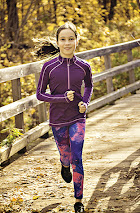We all want to make a difference for our community and our children. That’s why we teach, lead, and coach—be that in the classroom, on the stage, or on the field.
As educators, we create opportunities for our kids. We make space for them to use their creativity to express themselves or challenge them to learn new ideas and new ways of thinking.
We encourage them with “Yes you can!” and “Keep going, you’re doing great!” as they try harder, learn to self-regulate, breakthrough their glass ceilings, and gain more confidence.
And it is in those moments- you make a difference. And let me emphasize that point. You DO make a difference!
Creating Opportunities is Making a Difference
You made a positive impact when you opened doors for them that they would have otherwise walked past, missing the chance to feel supported and gain confidence in newfound skills.
“The average child in our nation spends about 6.64 hours at school, every day for 180 days a year.”
According to
https://nces.ed.gov/surveys/sass/tables/sass0708_035_s1s.asp, the average child in our nation spends about 6.64 hours at school every day for 180 days a year. That equates to kids being at school with us for about half of the calendar year. This is not counting after-school care or extracurricular activities!
For this reason, you are one of the people who have the opportunity to open new doors for our kids. To create new environments, help them experience new territories, and encourage growth; where they are in, they can succeed and overcome challenges.
A Real-Life Story of a Man Who Is Accomplishing Great Things
Nathan Martin is a man most of you don’t know, but he has accomplished great things and is right here in Jackson, MI. Nathan finished eighth at the NYC Marathon this year. But two years ago, he did even more.
According to a Runner’s World article featuring Martin, Nathan crossed the finish line of the 2020 Marathon Project in 2:11:05. Not only did he improve on his 2:14:34 personal best at the COVID-adjusted race in Chandler, Arizona, but it is at this race where he became the fastest U.S.-born African American marathoner in history.
“Being able to use the record to either impact kids or give somebody some person to look at and say, "Hey, he's achieved that. I can too,”
"The outreach of people congratulating me or saying how awesome they thought it was that I broke the record, I'm like, WOW, maybe I'm not thinking about things correctly. Maybe I need to really figure out what this record means to me," Martin told Runner's World. "Being able to use the record to either impact kids or give somebody some person to look at and say, "Hey, he's achieved that. I can too," was really awesome... Hopefully, I can continue to be someone who can inspire people".
How an Opportunity at School Changed His Life
In middle school, after running a required timed mile, a coach suggested that Nathan go out for the cross-country team.
This is the kind of thing coaches do every day at school. Teachers of all stripes encourage children to pursue or try something they show some interest and aptitude for. That simple comment made a difference in the trajectory of Nathan’s life.
Nathan feels blessed by the opportunities running has provided for him. You might think that winning the Olympics would be his biggest goal, but his greatest desire is to help the kids he coaches at the local high school become better runners and better people.
How A New Trajectory is Changing a Community
Nathan is now the one creating opportunities for students as a coach and substitute teacher. His knowledge and skills make him an inspiration to his team and a great resource.
His attitude, compassion, and empathy make him a leader that kids want to follow.
The full impact of his presence in the Jackson District Schools is not known yet, but it is certainly noticed by parents and administrators who are paying attention. More importantly, it is noticed by the students. Their lives will be affected by this coach and teacher, Nathan Martin, in big or small ways.
How You Make a Difference
Nathan’s story reminds us of the power of people and the impact of intentional connection and care. Who can measure the value of creating a new friend, finding a special interest, or overcoming fear by trying something that seems difficult? The opportunity to grow is presented daily.
Successful goal completion is one way you provide opportunities that build confidence and teach patience. It all starts with presenting new doors to them, encouraging them to step forward through the ones that excite them and try the ones they are uncertain about.
So continue to create opportunities and encourage kids to participate. Make it fun, make it challenging. Reach out and suggest new options for their sake. It makes all the difference.



















